Three Days In December

What lasting mark will the three-day transit strike of 2005 leave on the city?
The 1980 transit strike, which lasted 11 days, gave New Yorkers at least three tangible things: dollar vans, women who carry their good shoes in their bag and walk to work in sneakers, and the term “gridlock,” coined by Sam Schwarz.
The 1966 strike, which began on the first day of John Lindsay’s administration and ended 12 days later, painted the mayor – either fairly or unfairly – as an unsuccessful leader and contributed to the notion of an “ungovernable” city that took decades to overcome.
Even a series of streetcar strikes in 1880s left a legacy of shorter workdays.
It is too early to tell what will come out of the transit strike of 2005. Some, for example, hope it will result in bicycling and even walking as the new norm for commuters, and in permanent restrictions on automobile traffic. But, for the moment, the walkout seems above all else to have brought to light a series of issues connected to public employment -- labor issues that go far beyond the beef between one union and its bosses.
PENSIONS
On the night of the union’s strike deadline, as midnight approached, it became clear that the conflict that was leading to the showdown came entirely down to pensions. In his last-minute offer, Metropolitan Transportation Authority Chair Peter Kalikow drew nearer to the union positions on many issues but demanded that all new transit workers pay six percent of their wages for pensions -– up from the current two percent. The union balked, with Toussaint saying the plan would, in effect, cut the wages of new workers by four percent and only save the MTA “a pittance.” And, indeed the New York Times calculated that, if approved, Kalikow’s proposal would have saved the MTA $20 million a year for the next three years – a tiny amount of the agency’s $9.3 billion budget for the next fiscal year.
But the significance of the move extends beyond dollars and cents. “This is not the end of it. This is just the beginning,” E.J. McMahon of the Manhattan Institute told the New York Sun. “What Toussaint has done is educate a whole new generation of New Yorkers as to how cushy pension deals are for workers by private sector standards.”
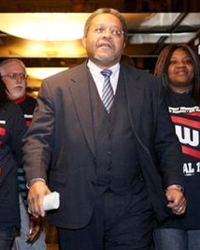 |
 |
|
Transport Workers Union leader Roger Toussaint on his way to a press conference; Union supporters gathered on the Brooklyn Bridge
|
|
Fiscal watchdogs and some politicians have long sounded the alarm about what a post-strike editorial in the New York Times called "an issue of growing concern all across America." Even in the private sector, "pensions are increasingly at risk and increasingly self-funded," but public officials nationwide see the cost of pensions for public employees as a growing threat and the effort to scale them back a future source of friction. Mayor Michael Bloomberg has cited it as one of the "uncontrollable" expenses undermining New York City's financial future.
By one reckoning, the city's pension bill went from $3.37 billion last year to $4.74 billion this fiscal year. It could go to $5.08 billion for the next fiscal year, which begins in July, 2006. A recent analysis by the Public Policy Institute, a state-wide business-oriented group, found that people who had retired from state and local government jobs in New York collected an average of $22,676 in pension benefits in 2003, about 16 percent above the national average.
Under New York state law, governments cannot reduce pension benefits for employees. But they can impose new requirements for new employees, as Kalikow suggested. At the city level, divisions already exist. There are four pension "tiers" in New York, based upon the employee’s start date, and Bloomberg has said a fifth for those most recently hired might be useful.
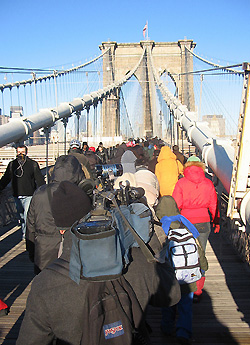 Some fiscal watchdogs would go further and restructure the pension system. Today public employees are guaranteed a set benefit after they retire. In most private companies, though, employers and employees make a contribution to a retirement account. The amount the worker receives depends on how much money those investments are worth once the employees retires. The Citizens Budget Commission and the Manhattan Institute have urged that government switch over to this so-called "defined contribution plan." This would protect the government from the vagaries of the financial markets but leave the individual worker bearing that risk.
Some fiscal watchdogs would go further and restructure the pension system. Today public employees are guaranteed a set benefit after they retire. In most private companies, though, employers and employees make a contribution to a retirement account. The amount the worker receives depends on how much money those investments are worth once the employees retires. The Citizens Budget Commission and the Manhattan Institute have urged that government switch over to this so-called "defined contribution plan." This would protect the government from the vagaries of the financial markets but leave the individual worker bearing that risk.
Of course, the only reason public employees have such generous pensions is that politicians agreed to them in the first place. In 2000, for example, Governor George Pataki reduced to zero the amount that transit workers and other government employees with 10 years on the job had to contribute to their pensions. And Albany has given retired public employees cost-of-living increases in their city pensions, a measure that alone will cost the city $820 million a year by 2010, according to Doug Turetsky of the Independent Budget Office.
“Now, with a foot in New Hampshire on his way out the door, George Pataki has discovered that New York has a pension crisis and that 34,000 transit workers … should be enlisted to solve it,” Wayne Barrett wrote in Power Plays, a Village Voice blog, during the strike.
And while Bloomberg has spoken repeatedly of the need to reduce pension costs, “he certainly hasn't demanded it,” said Steven Malanga of the Manhattan Institute,” In fact, in his recent contract talk with the teachers union, Bloomberg agreed to establishing a labor/management committee that could consider way to cut the retirement age for teachers from 62 to 55.
HEALTH BENEFITS
Faced with rising health care costs, the MTA asked workers to begin contributing to their health care costs. Until now, transit workers have not had to pay anything for their health care coverage. The MTA asked that future workers contribute two percent of their salary toward their health care. The union said it would not agree to any deal that made workers contribute to health care costs.
Along with pensions, this quickly became one of the most contentious issues in negotiations – and one that city officials and fiscal and labor experts watched closely. While some critics of the union pointed out the relative generosity of the plan in comparison to private sector workers, others said cutting health benefits could set a bad precedent for organized labor. Days before the strike, Newsday columnist Ray Sanchez described the transit talks as a “historic fight against pension and health-care rollbacks for public sector employees.”

A normally empty afternoon PATH ride; people taking the LIRR from Brooklyn and Queens to Manhattan;
The line for the Brooklyn ferry
The city government’s health insurance costs are rising rapidly. In 2004 these costs totaled $2.4 billion; they are expected to total $3.9 billion by 2009.
Across the country, public and private employers are squeezed by health insurance costs. Some private employers no longer provide health insurance to workers, and most of those that do require that workers pay an increasing share of the costs.
Public employees, on the other hand, have not seen this erosion in benefits and now receive much better health plans than workers in the private sector. According to the Employee Benefit Research Institute, local and state governments pay well over twice the rates that private employers do to insure workers (in pdf format).
But while Mayor Michael Bloomberg has frequently cited health care costs as contributing to future city budget deficits, critics say he has done little to address rising health care expenses and that, in the latest round of contract negotiations, did not gain any concessions from unions on such costs.
Malanga says the city should either reduce the amount that it pays for health benefits or find ways to offset the expenses.
A TOUGHER DEAL FOR FUTURE WORKERS
When transit talks reached an impasse, the issue was not about benefits or wages for union members -– it was about the benefits that future transit workers would receive.
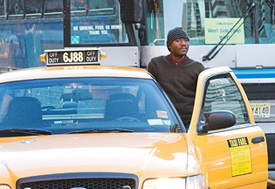 The Metropolitan Transportation Authority wanted to give future workers less generous pension and health care packages but, as Peter Kalikow, the authority's chair, repeatedly pointed out, the plans of current workers would not be affected.
The Metropolitan Transportation Authority wanted to give future workers less generous pension and health care packages but, as Peter Kalikow, the authority's chair, repeatedly pointed out, the plans of current workers would not be affected.
Still, union chief Roger Toussaint emphatically rejected the idea. "We will not sell out the unborn," he said, using a phrase he invoked repeatedly throughout the negotiations.
Historically, however, compromising with the benefits of future union members has been the easiest way for unions to respond to employer demands for cuts in expensive benefits.
"It's a common experience, and it's a way for a labor leader to make an unpopular decision in a way that his members -- the members who elect him or her -- don't have to pay for," said CUNY professor John Mollenkopf.
Unlike Toussaint, not all municipal union leaders have stood in solidarity with their future brethren. District Council 37, New York's largest public employee union, agreed earlier this year to give future workers fewer vacation days. And when given the choice this June, the Patrolmen's Benevolent Association decided to drastically cut the salaries of future officers and police cadets to pay for today's raises, instead of agreeing to other cost-saving measures.
Such action could lead to intra-union tension, as new workers enter the union with less favorable contracts and grudges toward the old guard leadership. In the case of the police officers, some also cited a fear that it could reduce the effectiveness of the police department.
"Setting a cadet's salary at $25,100 is no way to recruit the Finest," wrote the Daily News in an editorial in June, "and it illustrates how mulish the PBA and President Pat Lynch can be in refusing to accept productivity improvements.”
WORK RULES AND PRODUCTIVITY
Since becoming mayor, Bloomberg has invoked a kind of mantra in dealing with unions: Any salary increases will be at least partly paid for by increases in worker productivity. “From his statistic-packed management reports, to the bullpen cubicles he's made city administrators sit in, the CEO-turned-mayor is always looking for ways to improve output,” according to WNYC’s Dan Blumberg.
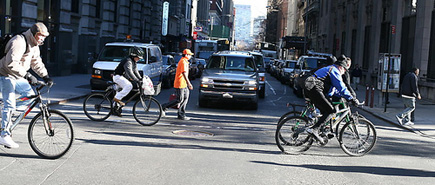
This issue arose early in the transit talks when the MTA sought to change rules for transit workers’ broadening job responsibilities. For example, the authority wanted conductors to become customer service agents who would roam the train, rather than stay in the conductor’s booth. Similarly, the MTA wants the former token clerks to move around subway stations and help riders. The union has expressed reservations about employees’ safety in stations, and passenger safety if conductors’ duties are changed. As negotiation went on, this issue seemed to fade although it could still emerge in a final settlement.
While Bloomberg has certainly sought productivity gains, it remains unclear how much he has actually accomplished in this area. While he has not gotten everything he has wanted, “labor experts say, he has wrung more productivity increases and other concessions out of the unions than previous mayors have,” Steven Greenhouse wrote in the New York Times.
Perhaps most significantly, this fall, the Uniformed Sanitationmen’s Union received a 17 percent pay hike over 51 months after they agreed to longer trash collection routes and to allow one person, instead of two, on trucks that pick up large roll-on bins.
The city also got some productivity gains and changes in work rule from the United Federation of teachers in their new contract. The teachers agreed to three additional professional development days – work days for them but not for students – in the school year and 50 minutes more a week, limited some seniority rights and gave administrators more flexibility in assigning teachers to such non-instructional tasks such as patrolling lunchrooms and playgrounds. Noting that the contract continues the practice of swamping “time for money,” the Citizens Budget Commission commented, “This policy is very expensive. The added time bought in this contract has an extra annual cost of about $230 million.”
And the Manhattan’s Institute’s Sol Stern said the contract was a far cry from the changes originally sought by Schools Chancellor Joel Klein who had wanted to scrap a whole array of contract provisions and replace the 200-page contract with a streamlined eight-page document. But in the end, Stern wrote, “Mr. Klein bit his lip and affixed his signature to yet another 200-page teachers contract — one containing the same lock-step pay schedule, based on seniority and useless education credits, he earlier promised to end.”
The gains in productivity and work rules have also had a price beyond dollar and cents, according to some observers. "In a kind of nonbelligerent way, [Bloomberg] has taken a very hard line, and his insistence on productivity givebacks has made labor relations very, very difficult," said Joshua B. Freeman, a labor historian at the City University Graduate Center.
RESPECT
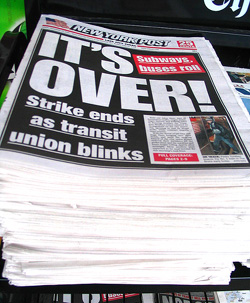 If Freeman is correct, the animosity may arise from the fact that work rules – how employees are treated on the job – go very much to workers’ feeling about whether their bosses respect them. Time and again, union leaders have said the city was not giving them the credit and respect that they deserve.
If Freeman is correct, the animosity may arise from the fact that work rules – how employees are treated on the job – go very much to workers’ feeling about whether their bosses respect them. Time and again, union leaders have said the city was not giving them the credit and respect that they deserve.
When the city suggested the Uniformed Firefighters Association, which is still without a contract, consider DC 37’s agreement as a model, firefighters president Steven Cassidy reacted scornfully. “Mayor Bloomberg says we're no different than people who just push paper,” he told WNYC. “That's a joke. It's an insult to police officers and firefighters who risk their lives everyday.”
Patrolmen’s Benevolent Association President Patrick Lynch has expressed similar sentiments. "We put on a shield on our chest, a gun on our hip and we go out and we go where no one else goes," he said. "And you're not going to respect us?"
After eight years of attacks from former Mayor Rudolph Giuliani followed by Mayor Michael Bloomberg’s takeover of the school system, teachers have felt insulted as well. "It's time to invest in the new three R's," UFT President Randi Weingarten told a “Respect for Teachers” rally in 2003. "Respect for teachers. Retention of qualified staff. And resources for schools." Teaches felt so slighted by what they considered micromanaging of classrooms by Chancellor Klein – a man with virtually no education experience before he began running the nation’s largest public school system – that the new contract specifically bars disciplining teachers for violating some of Klein’s rules about lesson time and bulletin boards.
Amid all the dollars and cents issues in the transit talks, “respect seemed to be the driving motivating factor,” Bruce Schaller wrote in Gotham Gazette. Workers have cited what they see as petty and punitive rules and arbitrary disciplinary actions against them. Workers are “punished and harassed daily by management,” Juan Gonzalez wrote in the Daily News. One worker told him, "We've been fed up with the MTA and wanted a strike for years."
And so, they got one. But it is not clear whether any strike could give the transit workers more respect or really resolve the many thorny issues facing New York’s government agencies and their workers in the months and years ahead.
All Images from Flickr
Â
City Council Stated Meeting - December 21, 2005
MEETING SUMMARY:
The New York City Council met for its final session of the year and passed more than a dozen new bills.
NOSTALGIC FAREWELLS
It was the last meeting under Speaker Gifford Miller, who is term- limited out of office. In addition, seven other veteran council members - Margarita Lopez, Eva Moskowitz, Phil Reed, Bill Perkins, Madeline Provenzano, Tracy Boyland, and Allan Jennings - said farewell to the legislative body.
The meeting began with nearly two hours of speeches, as members recounted their efforts over the last four years, said goodbye to the departing members, and offered parting advice.
Speaker Miller recalled how 38 new members took office in January 2002, a few months after the terrorist attacks of September 11th. He praised the council for closing billion-dollar budget gaps and for instituting new lead paint regulations, protecting domestic partnerships, and making emergency contraception more easily available.
"The city is better off now than it was four years ago because of the work of this council," said Miller. "And I know that those who are continuing on will do even greater things."
Several members took the opportunity to remember James Davis, who was shot in the council chambers in 2002. Councilmember Letitia James, who was elected to the seat after his death, said that she thought Davis would be proud of the work of the council to help the poor.
Outgoing Councilmember Bill Perkins used a portion of his time to say "how bad an idea term limits is."
Margarita Lopez focused on missed opportunities, arguing that the council should have passed legislation to create accessible taxis for the disabled.
And Allan Jennings - who was the focus of an embarrassing sexual harassment case and the only council member to lose a bid for reelection his year – offered a farewell promise.
"My parting words: 'I'll be back,'" said Jennings.
NOISE CODE
The major piece of legislation passed by the council was a revision of the city's 30-year-old noise code.
The new code (Intro 397-A):
- Restricts excessive noise from construction sites and allows construction work only between 7 a.m. and 6 p.m. on weekdays.
- Forbids sanitation or other large trucks from operating in residential areas at night.
- Requires bars to keep music below a specific decibel level.
- Allows Mr. Softee ice cream trucks to play jingles ONLY while they are in motion.
- Adds noise from motorcycles, car radios, and portable stereos to the city's regulations.
- And forbids continuous animal noise inside a residence for more than 10 minutes between the hours of 7 a.m. and 10 p.m. or for more than five minutes after 10 p.m.
The regulations also impose new fines - ranging from $50 to $8,000 - for those who break the law.
"This will make the city a quieter, healthier place," said Councilmember James Gennaro.
However, some members said that regulations were rushed through the process and that the council must revisit it in the New Year. "There are too many deficiencies and defects," said Councilmember Alan Gerson.
The noise regulations passed unanimously.
EDUCATION INITIATIVES
The council passed three bills aimed at improving city schools.
One bill (Intro 464-A) requires schools to do more to communicate with parents who are not proficient in English. Report cards, invitations to parent-teacher conferences, and other official notices must now be printed in nine different languages. The bill's supporters said the measure would help students who are most likely to drop out by getting their parents more involved.
"We are leaving the children of immigrants behind at a staggering rate," said Councilmember Hiram Monserratte.
However, some council members adamantly opposed it, saying it was a waste of $20 million that should go to the classroom or other more pressing needs.
"It sends the wrong message that you don't need to learn English," said Councilmember Andrew Lanza.
The council passed the measure by a vote of 35 to 11, with one abstention. Tony Avella, Simcha Felder, Dennis Gallagher, James Gennarro, Vincent Gentile, Andrew Lanza, Michael McMahon, Dominic Recchia, Kendall Stewart, Peter Vallone, Jr. and James Oddo voted "no;" Joseph Addabbo "abstained."
The two other bills require the Department of Education to provide more information to the council.
Intro 619-A requires the Department of Education to report on the average class sizes in each school.
And Intro 550-A requires the administration to provide the council with an account of "temporary" classrooms -- converted offices, bathrooms, basements, and even storage closets that some schools have been made into classrooms to ease overcrowding.
CONTRACTS FOR MINORITY AND WOMEN-OWNED BUSINESSES
The council also aims to give more city contracts to businesses owned by people of color and women.
The legislation (Intro 727-A) requires each city agency to establish a plan to encourage minority and women-owned businesses to compete for city contracts under $1 million. It also eases some requirements set by the Department of Small Business. The Bloomberg administration supports the legislation.
"This sets targets of what we want to aim for," said Councilmember James Sanders Jr. "But it does not set quotas."
The measure passed by a vote of 42 to 5. Simcha Felder, Dennis Gallagher, Andrew Lanza, Peter Vallone, Jr. and James Oddo voted "no."
INTERNET ACCESS FOR ALL NEW YORKERS
In an attempt to improve the availability of high-speed Internet access in New Yorkers, the council voted (Intro 625-A) to create a commission to look the issue.
The panel, whose members will be appointed by the mayor and council, will be required to hold public hearings in each of the five boroughs at least once a year to educate the public on new technologies and to solicit comments on the availability of Internet access in various neighborhoods.
REVISED HEALTHCARE SECURITY ACT
The council also revisited a bill it first passed in August that requires employers in grocery stores to provide their workers with health care insurance. The council amended the measure (Intro 758-A) to ease the regulations for small stores. It now applies only to grocery stores with more than 50 employees (up from 35 in the previous bill).
CHILD WELFARE
The council also passed two measures aimed at improving the well being of children.
Intro 480-A will create task force to investigate the death of any child in New York. Currently, the city only tracks deaths of children who receive support from the Administration for Children's Services. In other cities, such committees have lead to new child safety laws, pedestrian initiatives, and fire regulations.
The council also established (Intro 492) a parent advisory committee for the city's foster care system. It will consist of ten parents from organizations that work on foster care issues, four foster parents, and four parents who have adopted children.
GRAFFITI
The council passed several bills aimed at curbing and cleaning up graffiti.
Intro 299-A establishes penalties for certain commercial and residential property owners who fail to remove graffiti from their buildings and empowers the city to clean it up if an owner refuses to do it. Commercial and residential building owners (of properties with more than six apartments) can be fined between $150 and $300 for failing to remove graffiti within sixty days.
Another measure (Intro 663-A) mandates community service for those caught doing graffiti.
BOATING REGULATIONS AND CRIME IN PARKS
Since the Harlem River has been cleaned up in recent years, more people are using it for recreation, which has raised new safety concerns. In October, Jim Runsdorf, a man who was rowing on the Harlem River, was struck and killed by a motorboat.
The council passed legislation (Intro 495-A) establishing "no wake zones" on the Harlem River to improve boating safety. The city will post signs on the river and distribute information to boat docks in the area.
The council also approved a bill (Intro 470-A) that requires the police department to submit crime reports for city parks and playgrounds.
ENVIRONMENTAL LEGISLATION
The council passed a package of legislation that will require the city to purchase environmentally friendly or "green" products.
Intro 536-A requires the city to purchase faucets, showerheads, toilets, fluorescent lamps and other products with the "Energy Star" seal of approval.
Intro 544-A reduces the city's purchasing of products that contain hazardous or toxic substances.
Intro 545-A requires that paper office supplies, insulation, polyester carpet, restroom dividers, traffic cones, plastic trash bags and other items purchased by the city contain recycled materials.
Intro 552-A reduces the use of cleaning products with toxic chemicals.
And to ensure that the city is following these guidelines and to investigate other ways to reduce the environmental impact of items that the city buys, the council voted to Intro 534-A create an Office of Environmental Purchasing.
"We will use the vast purchasing power of New York City to send a message about what can be done to help the environment," said James Gennaro.
THE NEW YEAR - AND A NEW SPEAKER
The first City Council meeting of the new year is scheduled for January 4, 2006. At this meeting the council will elect a new speaker and approve any changes in the rules that govern how the council operates.
For information on who wants to be the next speaker and some of the reforms that returning council members want, see a transcript of a recent forum with the speaker candidates.
Â
Top 10 Stories of 2005
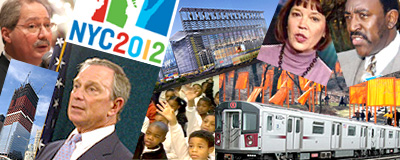
As 2005 drew to a close, one of the year’s biggest stories continued to unfold. In the early morning hours of December 20, the city’s transit workers walked off their jobs, setting off the city’s first transit strike in 25 years and leaving millions of Americans scrambling to get to work and school.
A transit strike any year would be a big story. But in 2005, the strike stood out because many of the other top stories of the year concerned things that did not happen -- Ground Zero did not make much progress, the West Side Stadium was not approved, the city was not selected as the site for the Olympics, the incumbent mayor was not kicked out, and there was no new terrorist attack in New York, despite such attacks in London and (last year) in Madrid. Indeed, some of the stories with the biggest impact on New Yorkers (or at least on New Yorkers' attention) took place outside the five boroughs -- in Washington, Baghdad, New Orleans, and elsewhere. It was, in reporter’s parlance, a slow news year in the Big Apple -- at least until late December.
One exception was the city’s newsrooms themselves. After New York Times reporter Judith Miller went to jail for refusing to disclose the name of a source, the paper found itself entangled in the investigation of high-level leaks in Washington and all too credulous acceptance of the Bush administration’s reasons for invading Iraq. Over at the Post, Lachlan Murdoch walked away from his job as publisher leaving his father, publishing tycoon Rupert Murdoch, to take up the job once. And Daily News editor-in-chief Michael Cooke has announced he will leave the paper early next year.
Here, not including such news about New York newsrooms, and in rough order of importance, are the Top 10 New York City stories of 2005:
1. Mayor Michael Bloomberg (And Everybody Else) Re-elected
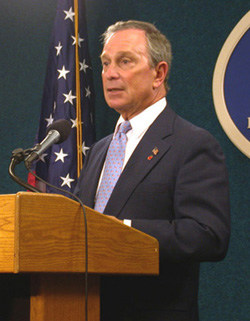 On an Election Day marked by low voter turnout, Republican Bloomberg defeated his Democratic rival Fernando Ferrer by 19.37 percentage points. To help achieve this victory, the billionaire spent $77,894,878 of his own money – or $103 for every vote he got. Ferrer spent about $9.5 million, or about $19 for every vote he got.
On an Election Day marked by low voter turnout, Republican Bloomberg defeated his Democratic rival Fernando Ferrer by 19.37 percentage points. To help achieve this victory, the billionaire spent $77,894,878 of his own money – or $103 for every vote he got. Ferrer spent about $9.5 million, or about $19 for every vote he got.
The defeat represented Ferrer’s third unsuccessful bid for Gracie Mansion. This time, though, the former Bronx borough president made it to the general election after he won the Democratic primary against three other major contenders. On primary night, Ferrer hovered around the 40 percent total he needed to avoid the runoff. Second place finisher Anthony Weiner, who had surged in the final days of the Democratic campaign, said he did not want a run-off, preferring to unify the party around Ferrer (and, some cynics said, ensure his own political future). The final tally showed Ferrer squeaking just ahead of 40 percent, negating the need for Weiner’s grand gesture.
Although the election dominated political headlines, much of the press treated an eventual Bloomberg victory as a foregone conclusion. Many of the city’s leading Democrats abandoned Ferrer, and few issues emerged to capture public attention.
In other municipal elections, all incumbents running again held on to their jobs – except for Allan Jennings of Queens whose tenure on City Council had been marked by accusations of sexual harassment and strange behavior. All the open City Council seats went to Democrats, enabling the party to hold on to its 48 to 3 edge in City Council.
One of the hottest contests came for Surrogate’s Court in Brooklyn, long a bastion for dispersing patronage and wealth to politically connected lawyers. In the contest to fill the seat left vacant after Judge Mitchell Feinberg was removed for misconduct, reform candidate Margarita Lopez Torres narrowly defeated the choice of the borough’s political establishment.
2. Transit Strike And Other Transit Troubles
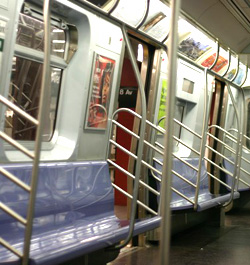 Members of the Transport Workers Union went out on strike on December 20, bringing a halt to the city’s subway system and buses. The union decided to launch the illegal strike -- the first transit strike in the city in 25 years -- after days of tense negotiations over wages, pensions, health benefits and work rules.
Members of the Transport Workers Union went out on strike on December 20, bringing a halt to the city’s subway system and buses. The union decided to launch the illegal strike -- the first transit strike in the city in 25 years -- after days of tense negotiations over wages, pensions, health benefits and work rules.
With the strike coming during the already busy holiday season, New Yorkers who normally ride mass transit scrambled to find other ways to get around town. The city instituted an emergency plan to help people, but drivers created gridlock on some roads, and riders reported confusion and congestion.
Labor problems were not the transit system’s only problem in 2005. The bombing of three subway stations and a bus in London on July 7 raised new concerns about the safety of New York’s mass transit system. Although the Metropolitan Transportation Authority had approved a $591 million security plan in 2002, at the time of the London attacks it had spent only a fraction of that amount – and that that had gone for consultants and more study. Responding to harsh criticism, the agency announced plans to improve security, deciding to pay defense company Lockheed Martin $200 million for a security and surveillance system at major bridges, tunnels and train and subway stations.
The police instituted searches of passenger bags and backpacks, a move challenged by the New York Civil Liberties Union but, so far at least, upheld in court.
In October, Mayor Michael Bloomberg temporarily increased security and told New Yorkers the subway system was facing a specific terrorist threat. A source in Iraq had reportedly told his U.S. government contacts that several men – some of whom may already have been in New York – planned to set off 19 bombs on the city's subways. Federal officials later determined that the threat had been fabricated.
3. Ground Zero -- Little Progress, Lots of Controversy
 Last spring, as planning for Ground Zero faltered once again, one observer wrote, “It’s striking that our parents and grandparents managed to win World War II in 44 months while we have not been able even to agree on a plan for what to do with Ground Zero.”
Last spring, as planning for Ground Zero faltered once again, one observer wrote, “It’s striking that our parents and grandparents managed to win World War II in 44 months while we have not been able even to agree on a plan for what to do with Ground Zero.”
2005 saw some progress. Ground was broken on the transportation hub downtown. The new building at 7 World Trade Center is virtually complete – but has no tenants. And work finally began on the memorial.
But overall planning for the site remained mired in controversy and confusion, with little common ground to be found at what many consider sacred ground.
Last spring, about 10 months after the cornerstone was laid for the Freedom Tower, the building went back to the drawing board after the police department expressed concerns about security at the building. Less than two months later, officials announced a new design. It met the police concerns but removed some trademarks of the original plan -- including the twist in the tower and the openwork at the bottom of the building. The tower will not be completed until 2010 at the earliest and no one knows who, if anyone, will rent space there.
The design problem spurred concern about the slow pace of overall planning for the site. Many blamed Governor George Pataki, saying the he was not paying attention. Perhaps in response, in October, Bloomberg, who until then had largely ignored Ground Zero, stepped into the breach. Challenging Pataki, Bloomberg called for removing developer Larry Silverstein from planning for the site and for building housing, not just office space (which no business seems to want to rent anyway). After his re-election, Bloomberg continued to press his involvement, appointing members of his administrations to the Lower Manhattan Development Corporation.
While some praised the major’s actions; others said he was creating more upheaval. And as he traveled around the country campaigning for president, Pataki vowed to stay involved at Ground Zero, perhaps setting the stage for a power struggle or simply for more inertia.
Also this year, the prospects faded for culture at Ground Zero. The Drawing Center withdrew from the site after families of victims of the 9/11 attacks questioned the political content of its exhibitions. Similar opposition prompted Pataki to overrule his own Lower Manhattan Development Commission and block plans for the International Freedom Center at the site. The decisions left the planned cultural building without any tenants, led many to question the role of the families in planning for Lower Manhattan and raised concerns about whether any bona fide cultural institution could withstand such scrutiny. Ironically, shortly after the museums withdrew, the Port Authority announced plans for a shopping mall near the site. So far, that idea has met with little, if any organized opposition.
4. State Politicians Stop West Side Stadium

After almost four years, plans to build a football stadium on Manhattan’s far West Side came to an abrupt halt in June when the leaders of the state legislature blocked the project. Mayor Michael Bloomberg had proposed and energetically boosted the project, but its defeat probably helped ease his re-election by removing a major argument against him.
The stadium’s supporters said it would be key to the future of the far West Side, would provide a home for the Jets and was essential for the city’s hope for the 2012 Olympic games. But critics challenged the financing of the deal, claiming it was a giveaway for the Jets that would be of little, if any, benefit to most New Yorkers.
In the end, the project also fell victim to the continuing woes at Ground Zero. ''Am I supposed to turn my back on Lower Manhattan as it struggles to recover?'' Assembly Speaker Sheldon Silver, who represents Lower Manhattan and voted to block the stadium said. ''For what? A stadium? For the hope of bringing the Olympics to New York City?''
5. Nets, Mets, Yankees Plan New Stadiums
|
|
But other projects to provide new and improved facilities for New York teams survived and thrived in 2005.
Plans for an arena for the Nets basketball team in downtown Brooklyn, accompanied by a huge residential and commercial development, moved forward as the Metropolitan Transportation Authority agreed to sell development rights to the Atlantic rail yards to developer Bruce Ratner.
Beyond the stadium, plans for the 22-acre area changed during the year. In July, Ratner and architect Frank Gehry proposed 17 buildings, including some as high as 60 stories. Overall, the project would include as many as 7,300 apartment and, many believe, would transform Brooklyn – for better or worse.
As it has grown ever bigger, the $3.5 billion scheme has attracted more opposition. And before the project can become a reality, the same state panel that blocked the West Side Stadium must agree to support it. Opponents also plan to launch legal challenges.
In Queens, the Jets’ loss became the Mets’ gain. Following defeat of the West Side stadium, the city and the baseball team agreed that the Mets would build a new, $600 million privately funded stadium on the site of a parking lot at the current home of the Mets, Shea Stadium. The city will provide $160 million for infrastructure. If the city had gotten the Olympics, it would have used the new stadium for that – which is what some of Bloomberg’s critics said he should have planned on doing all along.
And once the Mets got a new stadium, the Yankees wanted one too – an $800 million structure, also privately funded, to replace the House that Ruth Built. The new stadium will be north of the current one, on what is now parkland. The city will spend $135 million, and the state about $70 million. The loss of about half of Macombs Dam and John Mullaly parks has spurred some community opposition to the new stadium.
But the largest sports facility now proposed for the city is a NASCAR track on Staten Island that would seat 80,000 people. Although the track would be privately funded and has some innovative features – such as virtually forcing fans to take mass transit to the races – it has attracted widespread opposition among Staten Islanders concerned about its effects on the local economy and on the island’s already horrendous congestion problems.
6. Olympic Bid Fails
 After a years of effort, lavish presentations, appeals from celebrities and much wining and dining, New York City’s bid to play host to the 2012 Olympic games failed. In July, the International Olympic Committee awarded the sports extravaganza to London. Among the five competing cities, only Moscow was eliminated from contention earlier than New York.
After a years of effort, lavish presentations, appeals from celebrities and much wining and dining, New York City’s bid to play host to the 2012 Olympic games failed. In July, the International Olympic Committee awarded the sports extravaganza to London. Among the five competing cities, only Moscow was eliminated from contention earlier than New York.
Bloomberg and his deputy mayor – and architect of the Olympic bid – Daniel Doctoroff blamed the city’s defeat on the collapse of the city’s plans to build the Jet’s stadium, which would also have served as the main Olympic venue, on Manhattan’s West Side. But even before the stadium fell through, many observers said New York’s bid could falter due to lukewarm support for the idea among New Yorkers and global antipathy to Bush administration policies. Of course, many of those same pundits also predicted Paris would get the games.
7. Student Test Scores Rise
|
|
City public schools students are doing better in reading and math, according to a spate of test results released in 2005. Third, fifth, sixth and seventh graders saw scores rise on their citywide English and math tests, as, for the first time ever, more than half met or exceeded standards. For example, 77 percent of fourth graders in the city met or surpassed state standards for math, a 9.3 point jump and almost double the statewide increase.
Bloomberg touted the scores as an endorsement for tougher standards, a uniform curriculum and not promoting struggling students. But others questioned any connection, noting that scores rose in other cities in the state that had not instituted such sweeping changes. And there were setbacks too. Most notably, scores dropped among eighth graders, indicating persistent problems in middle schools.
The release of federal scores later in the year added to the confusion. While New York City fared better than many other urban school districts, the scores rose far less than they had on New York State tests. Such results led some to wonder whether students were getting smarter –- or city tests were getting easier.
8. Clarence Norman Convicted
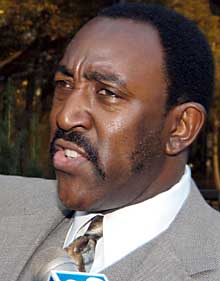 In two separate trials, Assemblymember Clarence Norman, longtime leader of the Brooklyn Democratic Party, was convicted of felony charges arising from his handling of campaign contributions. The convictions came amid heightened concern over corruption in the city’s courts, particularly the selling of judgeships in Brooklyn.
In two separate trials, Assemblymember Clarence Norman, longtime leader of the Brooklyn Democratic Party, was convicted of felony charges arising from his handling of campaign contributions. The convictions came amid heightened concern over corruption in the city’s courts, particularly the selling of judgeships in Brooklyn.
After his first conviction in September, Norman had to resign from both the Assembly and his party post. He faces up to 15 years in prison and awaits two more felony trials.
But despite Norman’s downfall, some questioned whether anything -- other than the player’s faces -- would really change and found plenty of evidence to support their skepticism. Party leaders selected Reverend Karim Camara, a colleague of Norman’s father, to replace him in the Assembly. Geoffrey Davis, brother of the late City Councilmember James Davis who had clashed frequently with Norman, told the New York Sun that Camara’s selection resembled a “Mafia style” selection when “the Godfather goes to jail and picks his successor.”
And the county leaders selected Assemblymember Vito Lopez to replace Norman as Kings County Democratic leader. While Lopez promised reforms, many doubted his sincerity. “Meet the new boss, same as the old boss,” the Daily News entitled its editorial on Lopez. And although Brooklyn District Attorney Charles Hynes has essentially acknowledged judgeships are sold in his borough, he has not yet indicted anyone on charges of doing so.
Faced with such widespread allegations, Bloomberg has said he will make improving the selection of judges a priority in his second term.
9. Fulton Fish Market Leaves Fulton Street

After 183 years, the Fulton Fish Market moved from its old outdoor location along the East River in Lower Manhattan to a new indoor facility in the Hunts Point section of the Bronx. The city first proposed the move in 1999 to bring industry to the Bronx, provide a more modern wholesale fish market and to improve the area around the old market as a residential and tourist neighborhood. Legal wrangling delayed the change, but it finally happened in mid November.
Many saw it as progress, with a sanitary facility replacing what many considered a smelly eyesore. But some had doubts. “The city is throwing away its history," said a fillet man named Bobby DiGregorio, known as Bobby Tuna, told the New York Times on one of Fulton Street’s last days. "One day, there's going to be a Banana Republic where I'm standing."
10. The Gates Come to Central Park
 It took 26 years of planning, 5,290 tons of steel and cost as much as $21 million but finally on February 12, more than a million square feet of saffron fabric unfurled from 7,503 steel frames in a wintery Central Park. The Gates -- the work of artists Christo and Jean Claude -- had become a reality.
It took 26 years of planning, 5,290 tons of steel and cost as much as $21 million but finally on February 12, more than a million square feet of saffron fabric unfurled from 7,503 steel frames in a wintery Central Park. The Gates -- the work of artists Christo and Jean Claude -- had become a reality.
The installation of gates of varying sizes positioned along park walkways transformed the park for 16 days at its most austere time of the year. By the city’s account, the work attracted 4 million visitors to Central Park and boosted the city’s economy by $254 million.
There were, of course, naysayers. But many found it entrancing. Calling it a “gift package to New York City,” Times art critic Michael Kimmelman wrote The Gates “is a work of pure joy.”
We can all hope 2006 brings more of those.
Â









